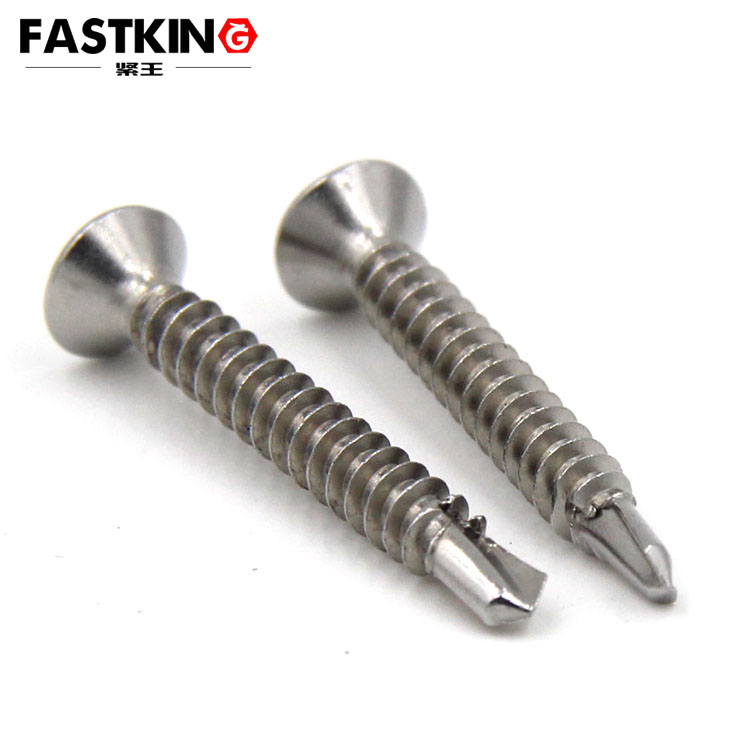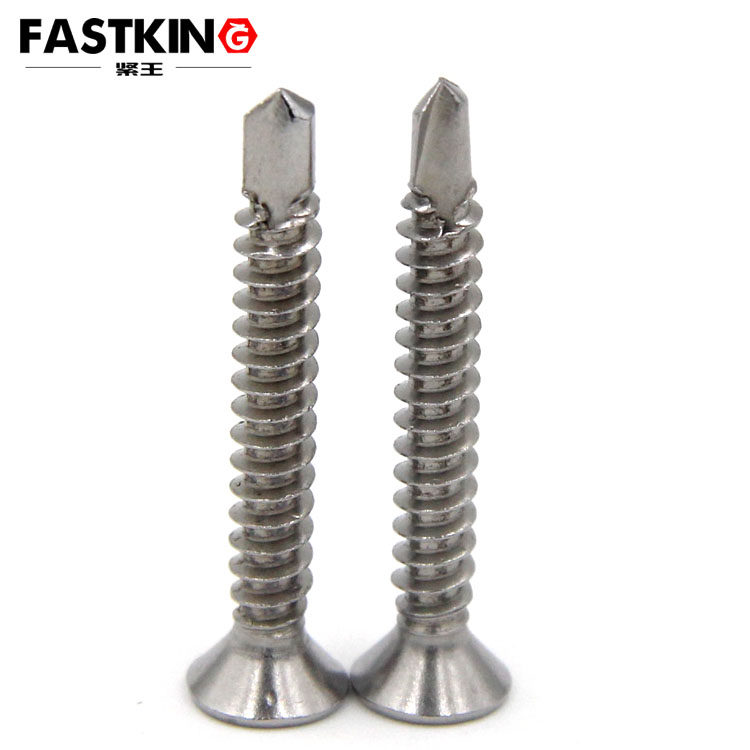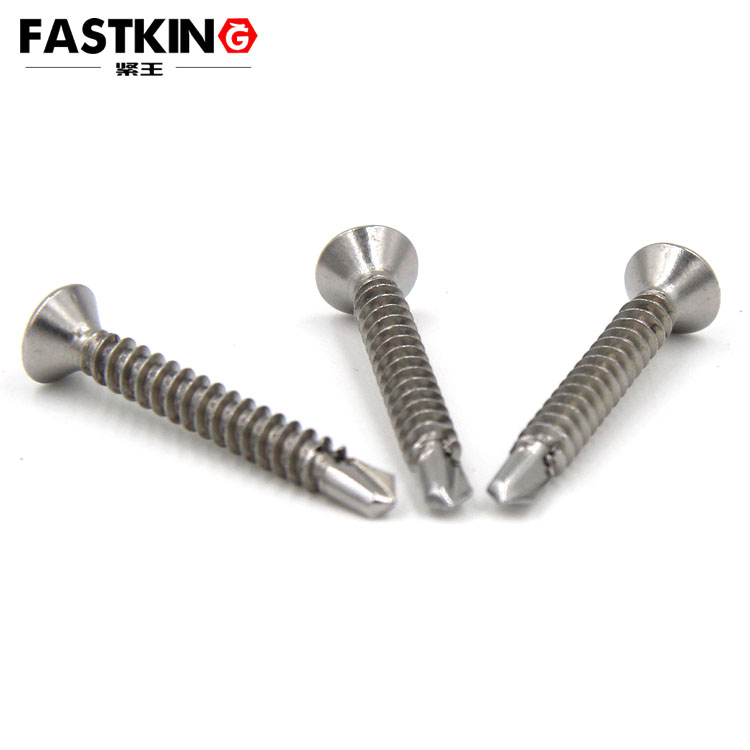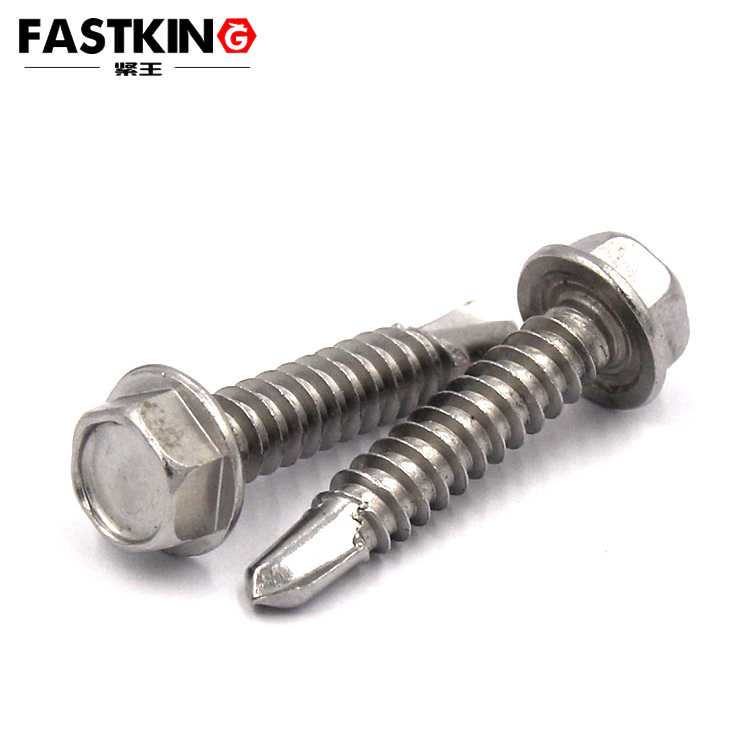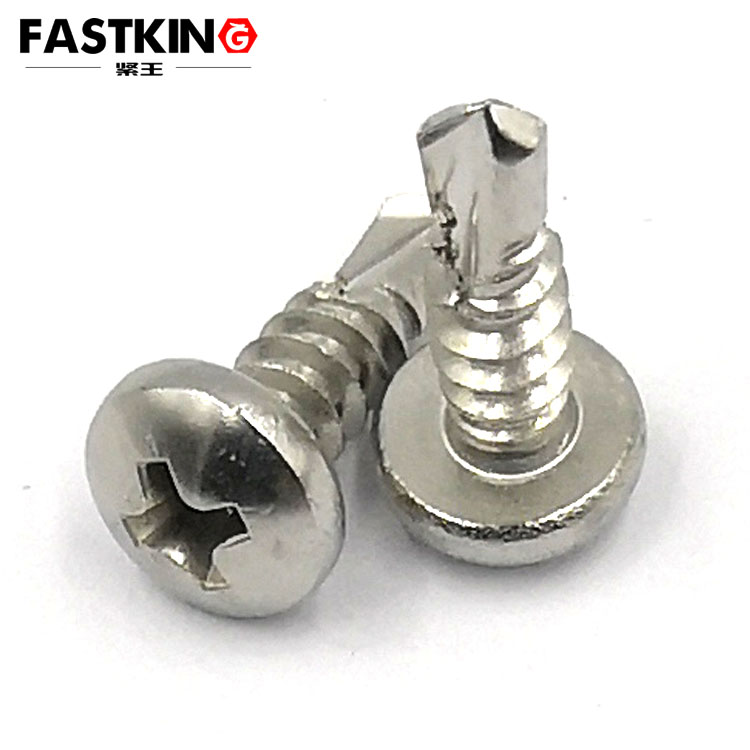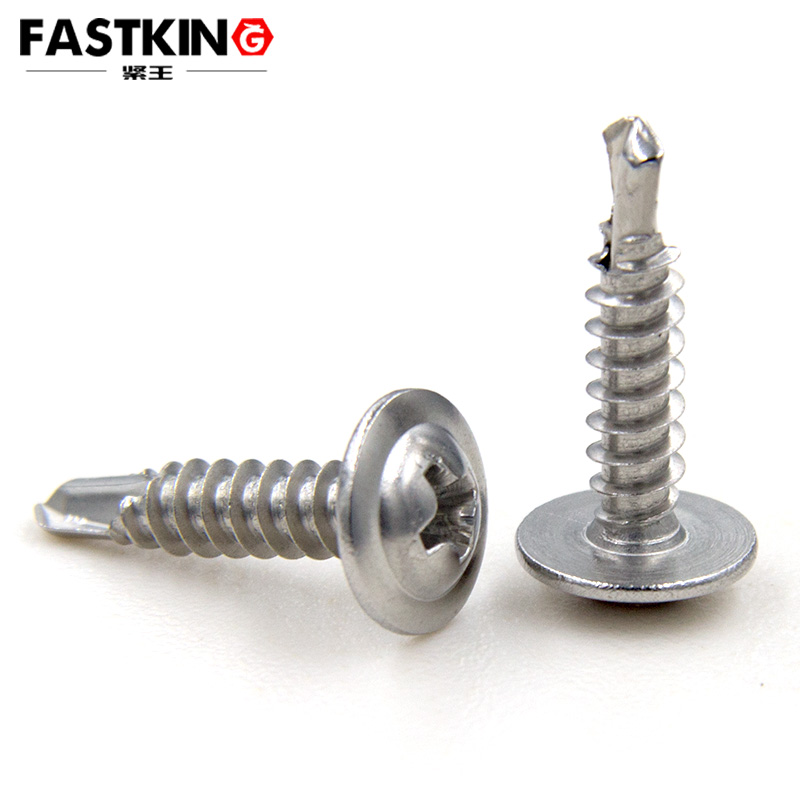Countersunk cross drill tail DIN7504 (P)
- Product description:Cross groove countersunk head self tapping and self drilling screw is also a kind of screw fastener commonly used in the national standard, which belongs to a kind of self drilling point tail.
This
Countersunk cross drill tail DIN7504 (P)
Material: stainless steel 304316, grade 8.8 high strength and grade 12.9 high strength
Product standard: DIN7504 (P)
It can also support non-standard customization.
Cross-recessed countersunk head self-drilling tapping screws are a type of screw fastener clearly specified in China's National Standards (GB/T). They fall under the category of "self-drilling point screws" (corresponding to national standards such as GB/T 15856.1-2002 Cross-recessed Countersunk Head Self-drilling Tapping Screws) and are widely used in connection scenarios for thin carriers like metal sheets and profiles. No pre-drilled pilot hole is required for assembly, significantly improving construction efficiency.
The structural design of this screw revolves around three core requirements: "independent drilling, self-tapping threading, and smooth assembly". The characteristics of key parts are as follows:
-
Drill point tip: As its core identification feature, it resembles a small twist drill (with spiral chip grooves). It is mostly made of high-strength carburized steel (e.g., 1022A) and reaches a hardness of HRC 50-55 after quenching. It can drill directly on carriers such as low-carbon steel and aluminum alloys, while the chip grooves promptly discharge metal chips generated during drilling to avoid jamming.
-
Countersunk head: The head adopts a conical countersunk design. After assembly, the head can be completely embedded in the carrier surface, forming a smooth appearance and preventing protruding structures from scratching or interfering with other components. It is suitable for scenarios requiring high surface flatness (e.g., furniture panels, equipment casings).
-
Cross recess: A standard cross recess is provided on the head (complying with the recess precision requirements specified in GB/T 3098.11). It is compatible with PH series cross screwdrivers or electric bits, facilitating torque application. Additionally, it rarely experiences "slipping" (a phenomenon where the tool slips out of the recess), enhancing assembly stability.
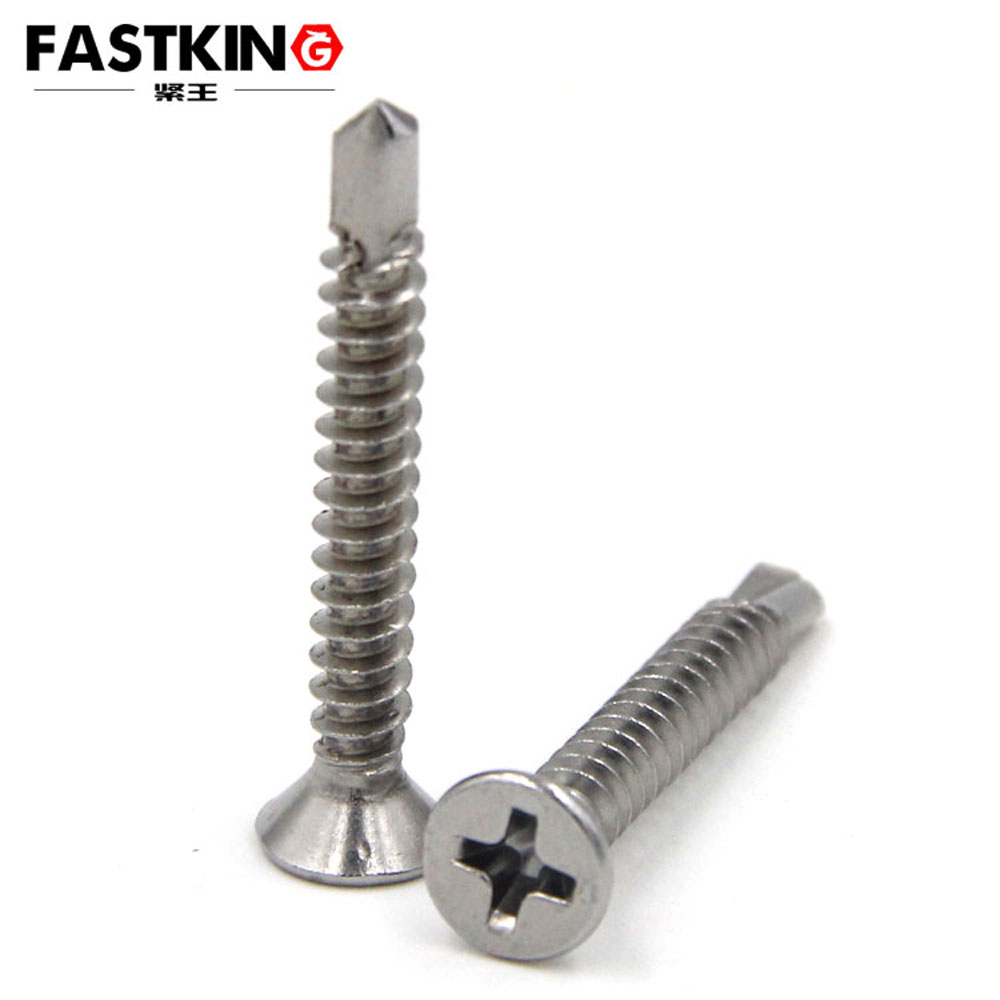
Different from ordinary tapping screws (which require pre-drilled pilot holes) and ordinary bolts (which need to be used with nuts), cross-recessed countersunk head self-drilling tapping screws achieve fastening through a "two-step integration" process, with the specific steps as follows:
-
Independent drilling: During assembly, the screw relies on the rotational force of a tool (e.g., an electric screwdriver). Its drill point tip contacts the carrier surface and applies continuous pressure. As the screw rotates, the spiral chip grooves cut the carrier material, gradually drilling a central hole matching the screw shank diameter (the drilling diameter is slightly smaller than the minor diameter of the thread). No additional drill bit is needed for pre-drilling.
-
Self-tapping thread forming: When the drill point completely penetrates the carrier or reaches the preset depth, the threaded section of the screw shank enters the drilled hole immediately. Since the thread profile is of self-tapping type (usually with a thread angle of 60° and a thread height slightly larger than that of ordinary threads), the thread squeezes the carrier material on the inner wall of the drilled hole during rotation, forcing the material to undergo plastic deformation. Finally, an internal thread that precisely matches the screw thread is formed in the hole.
-
Final fastening: With continuous tightening, the countersunk head gradually embeds into the carrier surface until it is flush with the carrier. At this point, the thread pair forms a reliable engagement, realizing the firm connection of the carrier. No other auxiliary parts (e.g., washers, nuts) are required throughout the process.
Leveraging the advantage of "assembly without pre-drilled holes", this screw is mainly used for carriers such as low-carbon steel plates, galvanized steel plates, and aluminum alloy profiles with a thickness of ≤ 6mm. Typical applications include:
-
Home appliance industry: Connection of panels for refrigerator and washing machine casings;
-
Construction industry: Fixing of light steel keels and color steel plates;
-
Automotive industry: Assembly of auto body accessories (e.g., fenders, decorative parts).
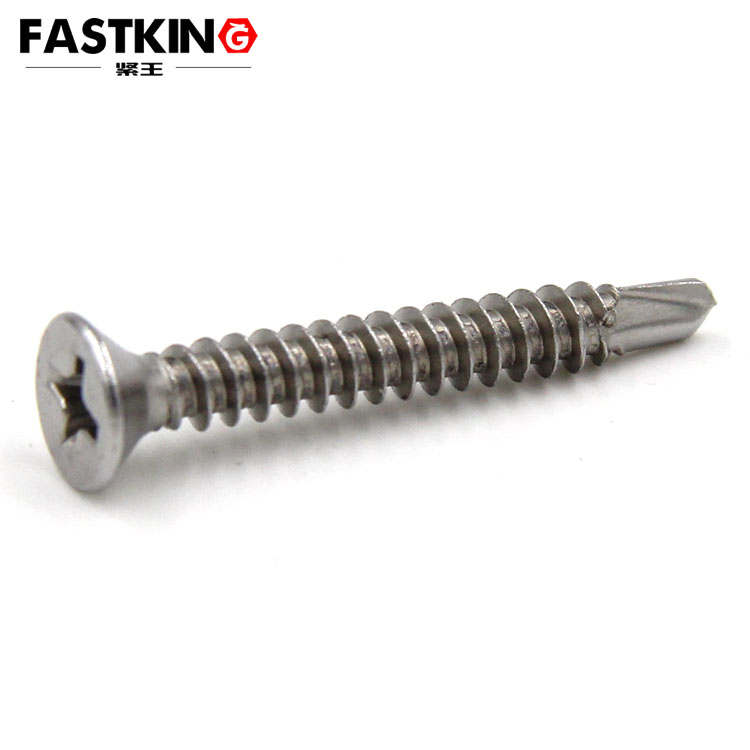
National Standard References: In addition to GB/T 15856.1, GB/T 3098.11 Mechanical Properties of Fasteners - Self-drilling Tapping Screws can also be referenced for specifications on its mechanical properties such as tensile strength and hardness, ensuring that the selection meets the needs of specific scenarios.

